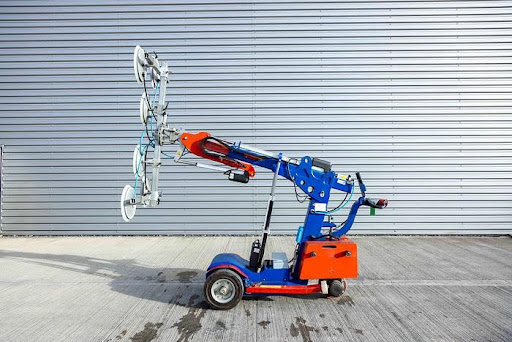Today, in the construction industry, there is a rapid change in the way building projects are approached. Amongst these is the innovation of vacuum lifting robots. The modern high-tech machines, commonly referred to as glazing robots, have played a significant role in safely and efficiently lifting non-porous materials such as glass, marble, stone, sheet metal, and insulated panels. This technology not only reduces risks associated with manual handling but also streamlines construction processes and leads to the fast completion of projects and efficiency in general safety on the site.
The Evolution of Vacuum Lifting Technology
Persistent innovation and a growing demand for improved safety and efficiency have been driving the journey of vacuum lifting robots from the status of a niche technology to a vital component in construction. Early versions of lifting devices were very cumbersome and labor-intensive, involving much manual labor and complex rigging, which often resulted in extended periods of downtime and increased risk of accidents. Modern vacuum lifting systems, on the other hand, rely on sophisticated suction mechanisms that securely grip the smooth surfaces of materials. This technology has been designed to offer high precision in the lifting process, so even the most fragile materials are handled with care. Sensors and automated control systems incorporated into these robots enable them to adjust to different weights and surface conditions, thus minimizing the chances of slippage and damage during transport. This is why construction companies are increasingly looking at these robotic systems as a way to minimize risks while meeting the increasing demands for speed and accuracy in construction projects.
Applications in Handling Non-Porous Materials
One of the most significant advantages of vacuum lifting robots lies in their versatility when it comes to handling a wide range of non-porous materials. In modern architectural designs, large glass panels are a common feature in high-rise buildings and commercial spaces. These robots offer very precise control that enables the safe installation of such panels, reducing the chances of breakage and ensuring pinpoint accuracy in installations. Materials such as marble and stone, which require a delicate touch because of their weight and fragility, also benefit immensely from the nuanced handling capabilities of these machines. There’s also the proficiency of the vacuum lifting robots for sheet metal as well as other insulated panels increasingly applied in new constructions to emphasize aesthetics as much as functionality; this automatically tends to lighten workers’ manual task load as lifting these materials through vacuum lifting helps them achieve fast, efficient translocation without inflicting further workload or even some physical discomfort throughout the site area.
Improved Safe and Efficient on Site
Safety and efficiency, in the construction industry, must be achieved using a dual approach. Vacuum lifting robots are beneficial in this sense because they include advanced safety measures, such as automated suction control and emergency release mechanisms, in order to lower the chances of accidents that take place during the manual lifting processes. The integration of sophisticated sensors ensures that the suction force is continuously adjusted to match the weight and type of material being handled, thereby preventing potential mishaps. This not only protects the integrity of the materials but also safeguards the wellbeing of the workforce. Furthermore, the precision movement capabilities of vacuum lifting robots mean that materials can be positioned accurately, reducing the need for subsequent adjustments and minimizing delays. Those automation tasks translate into faster project completions and reduced labor costs that include attractive return on investment for construction firms. Indeed, the move to adopt such cutting-edge technology becomes crucial for firms to survive as companies continue to struggle and find ways to meet the challenging requirements of increasingly complex construction projects.
Future Prospects and Industry Impact
The future impact of the vacuum lifting robots on the construction industry is set to increase. As the technology progresses, future iterations will include enhanced features like even more sophisticated AI-driven navigation and real-time data analytics. Further, they can be seamlessly integrated with other construction technologies. It will not only broaden the scope of applications but also improve the safety protocols and operational efficiency further. Further development of the vacuum lifting technology will certainly mark new heights for the industry by handling more extensive varieties of material with high accuracy and reliability. For construction companies, it becomes a strategic move in keeping pace with the rest of the industry trend of automating and embracing digital transformation. These robots symbolize a massive change in the material handling operations, which allows modern construction work to be undertaken with higher accuracy, lesser risks, and increased cost-effectiveness.
Conclusion
The invention of vacuum lifting robots is one of the greatest technological advancements in construction. Utilizing the power of highly advanced suction mechanism and automated control mechanism, these robots ensure efficient and safe handling of non-porous material such as glass, marble, stone, sheet metal, and insulated panels. The ability to streamline workflows and reduce risks associated with manual handling makes them indispensable assets on modern construction sites. As technology becomes more mature and integrated into other automated systems, the future of construction is set to become well-equipped with an era of overall productivity, higher safety standards, and operational excellence.



































